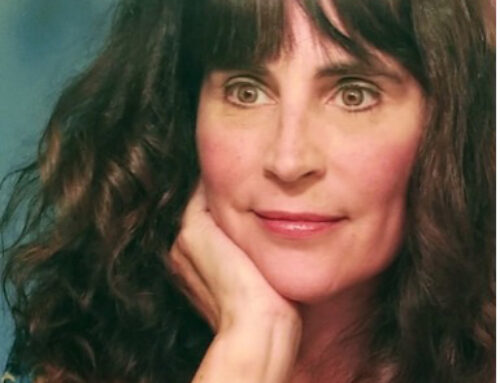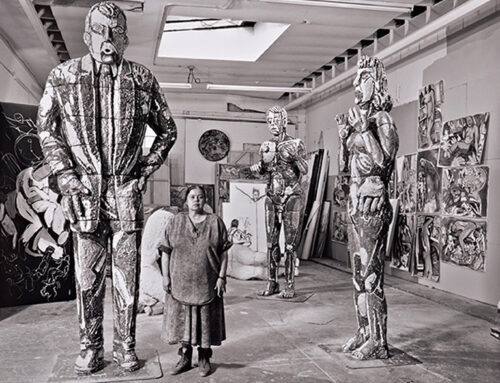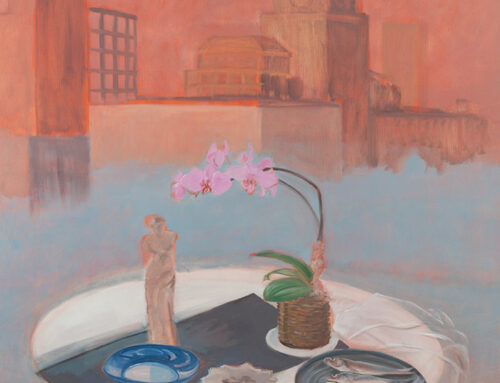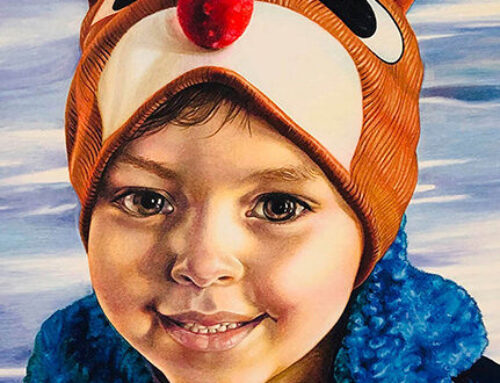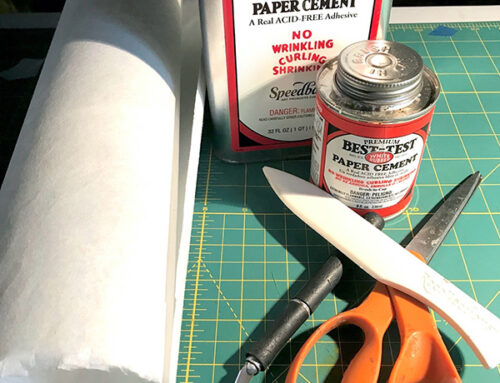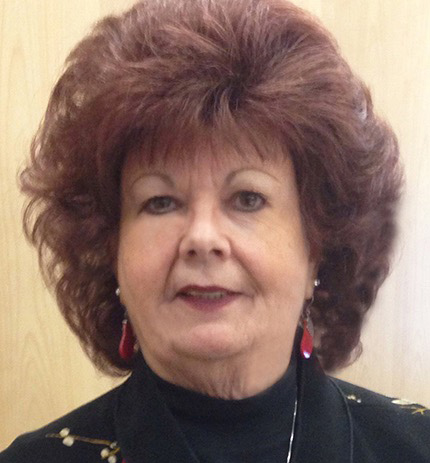
When did you realize that the camera could be a way of expressing yourself?
In 1990 while working for the Department of Defense as an illustrator, I was sent to the Aberdeen Proving Grounds Army Base in Maryland, to do a photo shoot of the front panel of an Army tank that eventually was used in Desert Storm. I used a secured government camera to take these images. I enjoyed this experience so much that I purchased a small Canon 35mm camera and decided to start taking photographs of objects, scenery, and the usual images that a beginning photographer would take. That’s how my hobby got started and then grew into a professional contemporary fine art photography career.
Did your parents encourage your creative interests?
My father was a civil engineer, and I would watch him work on blueprints and sketches of his assignments. My mom took art classes at a local high school and was a John Nagy paint-by-numbers fan. I always saw both parents working on their creative projects. My grandmother on my father’s side was a business woman, but took numerous art classes with masters of Chinese calligraphy and pen and ink drawings. I have a few of her works hanging in my home.

Diamonds, black and white photograph, 20 in. x 16 in.
Who were your muses? Was it a particular person, teacher, friend or another source that inspired you?
I was very fortunate to study with several muses who inspired my photography and also my love of the arts: Mary Ellen Mark, Joyce Tenneson, and Ernestine Rubin.
Mary Ellen Mark encouraged me to capture documentary images and images pertaining to the darker side of life. She talked about her photojournalism and diverse cultural images, both at the Woodstock School of Photography and her studio on Greene Street. My thesis was on Encroachment, how roadkill was a symbol of the clash between nature and civilization.
While visiting Joyce Tenneson’s studio and viewing images of her impressive portraits, I was especially attracted to her images and a book called Wise Women. Her use of studio lighting to capture the body, facial expressions and moods were stunning. It helped me understand the importance of capturing the special traits of each person using lighting and expressions.
Ernestine Rubin was the first professional woman photographer that I had the privilege to work with. She inspired me to use my imagination and to look beyond an image. Her strength was in capturing and combining sensuousness and the body. I was then able to combine the male and female body with the landscape to create a mood and/or a metaphor.
Each of these powerful women photographers inspired me on my path of capturing unique images. I would also like to add the names of my grandmother Elsie G. Hammond and my Mother Virginia Hammond, who always encouraged me to do what I enjoyed doing.
Do you believe that your education in the field was of paramount importance, or was it your own intuitive investigation that enabled your development?
I was encouraged by two TV personalities, Miss Francis of the Ding Dong School and Winky Dink (hope some people remember them), when I was about 3 or 4 years old. I could go up to the TV screen and copy what I saw. I have always been interested in doing artwork. I would doodle in my notebooks, work extra hard on art projects, design flyers and even work on set designs for class plays and events.
When I started work for the Department of Defense in New Jersey, I was a clerk but worked my way up to the Art Department by taking numerous courses and finally achieved an AA from a community college, and a BFA and MFA from William Paterson University.
Creativity and love of art was always a part of my spirit, and curiosity about the different mediums, combined with education and years of practice, definitely enabled my development.
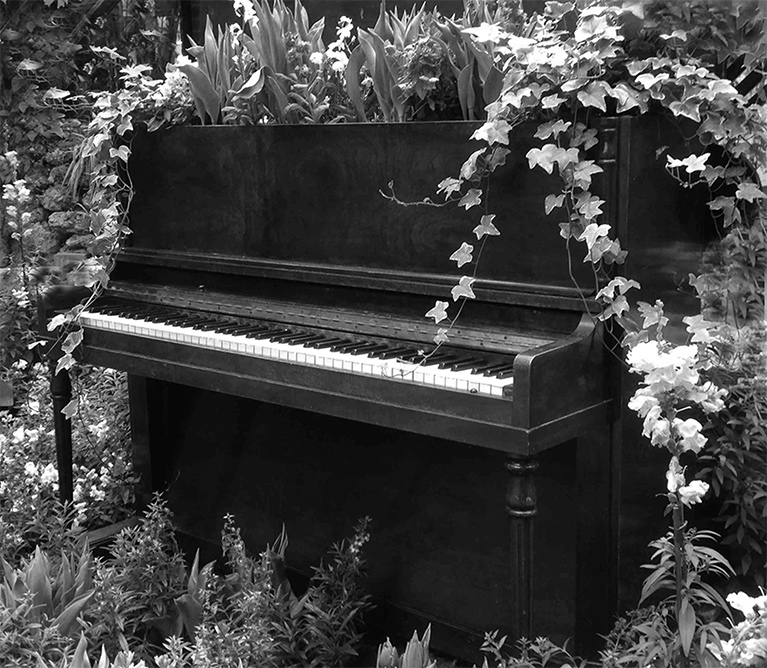
Ivory and Ivy, Black and white photograph, 18 in. x 18 in.
You have been actively involved with NAWA for many years, both as President and Executive Director. What was the genesis of that relationship? What do you feel you accomplished for the national organization?
I was accepted into an open NAWA show in 2002 and was juried into membership in 2003. At that time, I was working for the Department of Defense and working on my Masters. At the induction ceremony I volunteered to help out Sonia Stark with the Membership Committee and became Chair of that committee in 2005. I worked with the Membership Committee all through my Presidency and Executive Director position. My motto was always “Communication and Compromise”, and those were the two themes I always stressed.
Over the years I have worked with seven Presidents, eight administrators, six bookkeepers and various part time workers and volunteers.
My Presidency lasted from 2008 to 2010, and here are a few achievements in that role:
- The NAWA Archive was expanded to include Solomon R. Guggenheim Museum, Whitney Museum of Art, the National Museum of Women in the Arts, The New York Public Library, the Library of Congress and the Film and Fine Arts Library at Harvard University.
- A grant was written and completed with the Blanchette Hooker Rockefeller Fund, and NAWA was awarded $20,000.
- A Symposium at the National Museum of Women in the Arts was held in Washington, DC, on March 28, 2009. I secured hotel reservations for all attendees. It was open to the public in their fabulous auditorium. Fifteen past presidents presented reports and discussed their presidencies and accomplishments, and Jeffrey Wechsler did a presentation about “A Parallel Presence”, an historic exhibit celebrating NAWA’s 120th Anniversary.
- The Honorary VP list was revised and a category for Honorary Lifetime Members for long-standing senior members was established.
- A summer raffle, began in 2010, was held each year thru 2020, which created an additional $4-5,000 for NAWA each September.
- The Associate Members non-juried category was initiated for emerging artists. Eventually 30 of those members applied and were juried into regular NAWA membership.
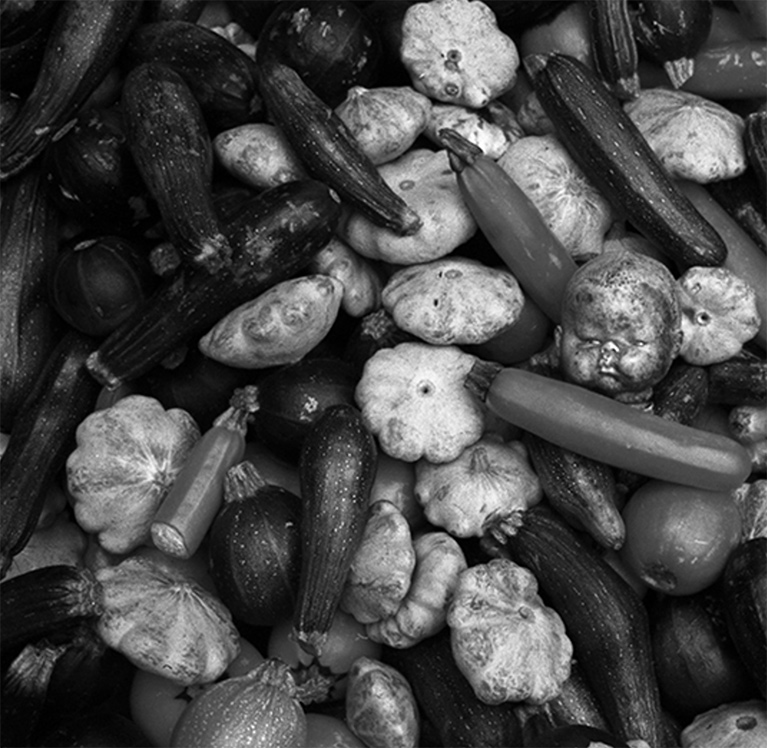
Mixed Vegetables, Black and white photograph, 16 in. x 20 in.
During my reign as Executive Director the following was achieved:
- I did numerous speaking engagements and participated in panel discussions to introduce NAWA as well as graduating students to the public: the New School in NYC, the Elder Hostel (formerly the Road Scholar Organization) the Chamber of Commerce, and the 100 Year Association (of which NAWA is a member), to name a few.
- I participated in a play (written by Sandra Bertrand) about the 5 founding members of NAWA, in celebration of NAWA’s 130th Anniversary. I played the part of Grace Fitz-Randolph.
- I was the POC on numerous exhibitions, for instance Point Park University in Pittsburg, PA, and the Banana Factory in Bethlehem, PA .
- I organized three trips for NAWA members and friends, with Phil Levine from One Art Travel, to Cuba and Mexico. They brought in well over $10,000 in commissions for NAWA.
- I established the Art Angels yearly “Thank You” exhibition for NAWA members who have contributed numerous hours of volunteer time to the organization.
- I founded the South Carolina Chapter of NAWA in 2018 with the help of SC artist Jennifer Rocco Stone.
- I was able to visit the Florida Chapter, the Massachusetts Chapter and South Carolina Chapter numerous times to foster a strong and vibrant working relationship.
- I initiated and finalized a traveling NAWA show “Renaissance Women” with panel discussions at six NYC Libraries, and received a grant of $12,000 from the Blanchette Hooker Rockefeller Foundation for that purpose.
- I established the NAWA Facebook page, established in March of 2011.
- A CD Library and Registry was established, wherein each artist could send in a CD or flash drive with their artist statement, resume and 20 images of their artwork. This was used for curators and special exhibitions.
- The Spring Salons were established.
- I handled the advertising, vetting jurors, and overseeing the Margo Harris Hammerschlag Award for Direct Carving from 2008 to the present.
- My husband and I organized NAWA’s move from 14th Street to 315 West 39th Street, NYC, which enabled NAWA to reduce costs, and also have a combined gallery space and office.
- I wrote a grant to the Berk Foundation, receiving a check from them for $5,000.00 that helped with to the digitization of the NAWA Archive at the Alexander Library.
- I co-founded the MA, BFA, MFA Free Graduating Student membership category in 2017. This enabled graduates to enjoy a one-year free membership.
- Each year I organized the Induction Ceremonies from the Metropolitan Museum of Art, the Helen Mills Theater to the Rubin Museum. I also organized and vetted guest speakers for our Annual Luncheon at the National Arts Club, the Harmonie Club and also the Manhattan Penthouse Restaurant. Speakers included Audrey Flack, Dr. Gail Levin, Joanne Mattera, Judy Pfaff, Faith Ringgold, Rhoda Sherbell, Linda Stein, Ursula Von Rydingsvard and Kay WalkingStick, to name a few.
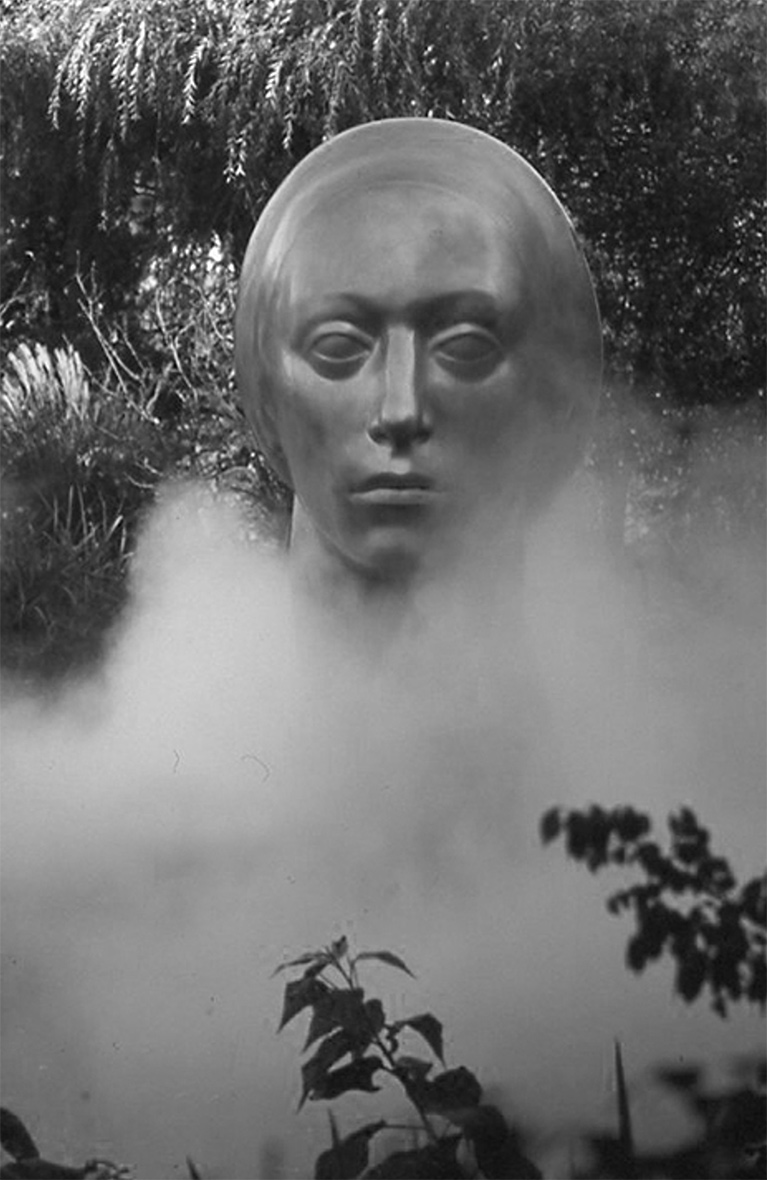
Leucantha in Smoke, Black and white photograph, 20 in. x 16 in.
Tell us something about your own vision and style of working with the photographic image.
“A moment in time” is what numerous photographers think about when they take an image. That is exactly what it is. Each moment creates a different image, due to movement, lighting and creative energy. I enjoy working with models in the landscape. The texture of the body within the landscape intrigues me. Series work is always exciting, because you can constantly find a new image to include in a previous body of work. I enjoy working in black and white and establishing a mood, and have included in my body of work nudes, landscapes, unusual scenes, portraits and flora and fauna.
Have you ever felt any limitations as a woman working in your chosen field?
Through the years I have often felt that men were admired and respected for their creative endeavors, and even paid more money than women. Women on the other hand were considered hobbyists and crafters, which I always resented. I think things have changed with stereotyping in recent years. I have NEVER felt any limitations as a woman working with photography. There were occasions when taking workshops during my early career, when I was the only woman photographer, but I always tried to fit in with my sense of humor and made the best of it. While working with nudes I noticed that I always took emotional and sensitive images in order to portray feelings, moods or even metaphors, while men seemed to only take more sensual images, but that is the only difference that I ever felt in my career working with men.
Has the current pandemic had any effect on your approach to photography? How has it limited, if at all, your approach?
This pandemic has created havoc on the world, and it is so sad. Being inside so much I have taken the time to scan in over 4,000 slides and am still working on scanning negatives but have not been as productive with taking photographs. Because of the total lockdown I was not able to hire models (which I do during the summer months), nor have I been visiting places where I usually find interesting images. I have taken a few snow scenes and a few landscapes, but my enthusiasm has been a bit depleted just waiting for things to get better. I am anxiously awaiting the day when things get back to some sort of normalcy.
Since you’ve retired from your role as Executive Director, what do you see yourself doing creatively or otherwise in the near future?
I have devoted so much of my time and love for NAWA and the many NAWA members, and women artists in general, that it was quite unsettling for me when I first retired. For the first time in many years I had quiet time, plus I did not have to get up at 4 am and leave the house at 5:15 am to travel into the city a few days a week. Retirement was definitely NOT for me. I like chaos, I like 10 balls in the air (all at the same time) and trying to catch them at once! I like being busy, I enjoy being with people, having fun, working, visiting museums, attending receptions, and working on my photography. Then the pandemic hit, so again everything came to a halt for me. Twice in three months. Yikes. I am blessed with a wonderful husband, a roof over my head and food, but I look forward to the day when I can get back to doing some of the things that I love and enjoy.
What do you see for NAWA?
I look forward to the day when I can visit NAWA in its new home – the National Arts Club. I hope it will be a rewarding and exciting experience for NAWA, an historic women’s art organization and its connection with a historic landmark building.



